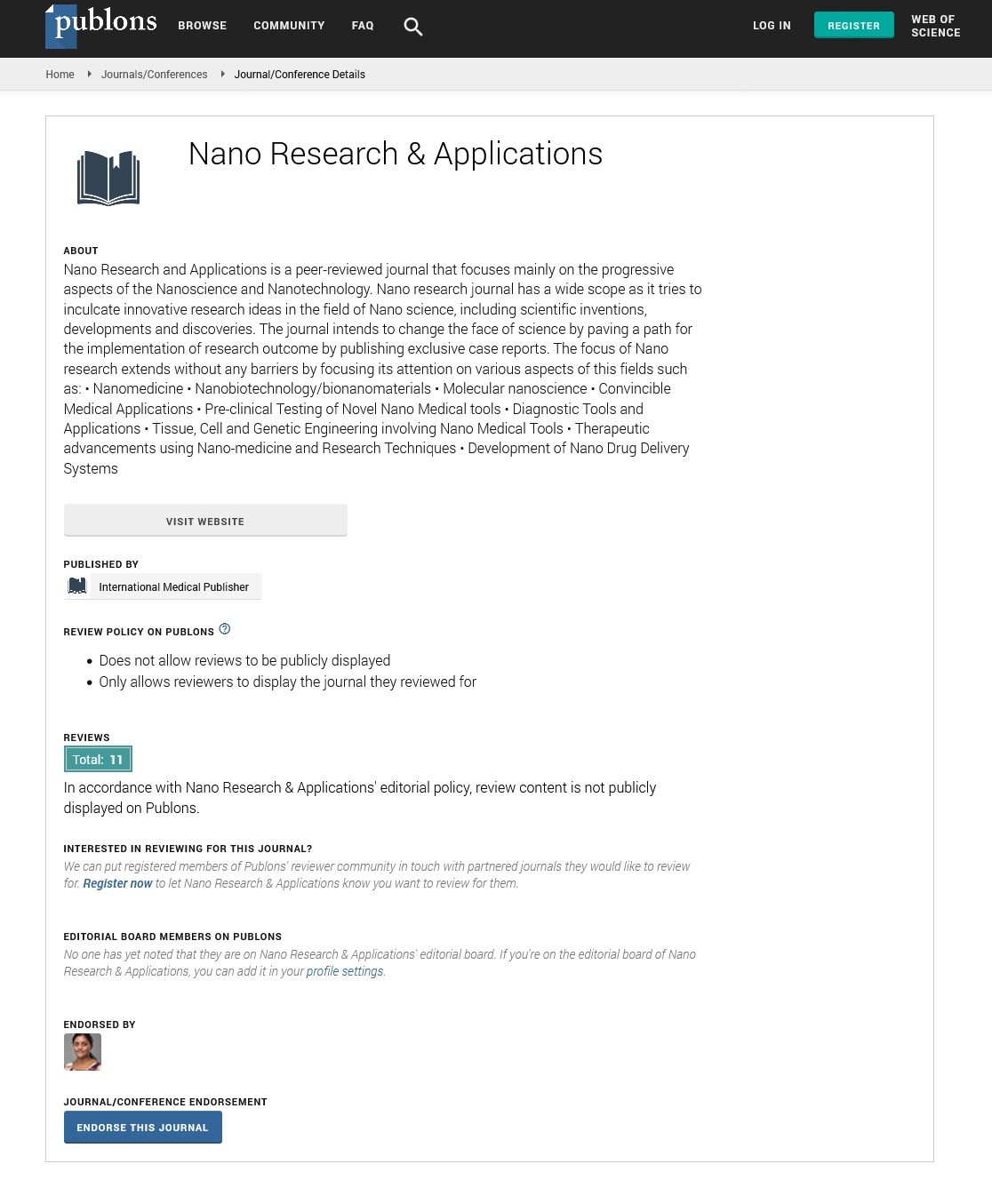ISSN : 2471-9838
Nano Research & Applications
Investigation of Pt-supported nanographene produced by in-liquid plasma for development of polymer electrolyte fuel cells
Joint Event on 26th International Conference on Advanced Nanotechnology & 2nd Edition of International Conference on Materials Technology and Manufacturing Innovations
October 04-05, 2018 Moscow, Russia
Vladislav Gamaleev
Meijo University, Japan
ScientificTracks Abstracts: Nano Res Appl
DOI: 10.21767/2471-9838-C5-020
Abstract
Recently, various fuel cells, such as polymer electrolyte fuel cell (PEFC), are attracting a lot of attention owing to small size and at relatively low working temperature (below 80°C), which makes possible usage of PEFCs in automobile and household power generation. However, PEFC has a problem with decrease of output caused by corrosion of amorphous carbon used as a catalytic carrier, which could be solved by use of carbon nanostructures with stronger crystal structure than amorphous carbon. In this work, nano-graphene supported by Pt nanoparticles was synthesized and examined for possible application in development of PEFC with increased durability. Nano-graphene was synthesized by in-liquid plasma generated in ethanol using AC high voltage (~11.7 kV). Amorphous component of synthesized nano-graphene was removed by hydrogen peroxide treatment and removal of amorphous carbon was confirmed by Raman spectroscopy. Platinum (Pt) nanoparticles were prepared on the surface of nano-graphene by the reduction of Pt salt precursors (H2Cl6Pt) in solution. Formation of Pt nanoparticles of diameter in range 2-4 nm was confirmed by transmission electron microscopy and X-ray diffraction measurement of Pt-supported nano-graphenes. Membrane electrode assembly (MEA) was constructed, where Pt-supported nano-graphene was used as the catalytic layer. Power generation characteristic of MEA were evaluated and current density for developed MEA was approximately 240 mA / cm2. From the electrochemical evaluation of Pt-supported nano-graphene, it was found that durability of Pt-supported nano-graphene was about seven times higher than that of carbon black, which looks promising for improvement of durability of PEFC.
Biography
Vladislav Gamaleev has completed his PhD at Kochi University of Technology, Japan. He is a Postdoctoral Researcher at Meijo University. His research interests include “Generation of plasma at atmospheric and high pressure in gas and liquid phase, and plasma diagnostics by optical emission spectroscopy”. Currently, he is focusing on the generation of oxygen radicals by atmospheric pressure plasma for biological and agriculture applications. He is a member of Japan Society of Applied Physics (JSAP).
E-mail: vlad@meijo-u.ac.jp
Google Scholar citation report
Citations : 387
Nano Research & Applications received 387 citations as per Google Scholar report
Nano Research & Applications peer review process verified at publons
Abstracted/Indexed in
- Google Scholar
- China National Knowledge Infrastructure (CNKI)
- Directory of Research Journal Indexing (DRJI)
- WorldCat
- Publons
- Secret Search Engine Labs
- Euro Pub
Open Access Journals
- Aquaculture & Veterinary Science
- Chemistry & Chemical Sciences
- Clinical Sciences
- Engineering
- General Science
- Genetics & Molecular Biology
- Health Care & Nursing
- Immunology & Microbiology
- Materials Science
- Mathematics & Physics
- Medical Sciences
- Neurology & Psychiatry
- Oncology & Cancer Science
- Pharmaceutical Sciences
